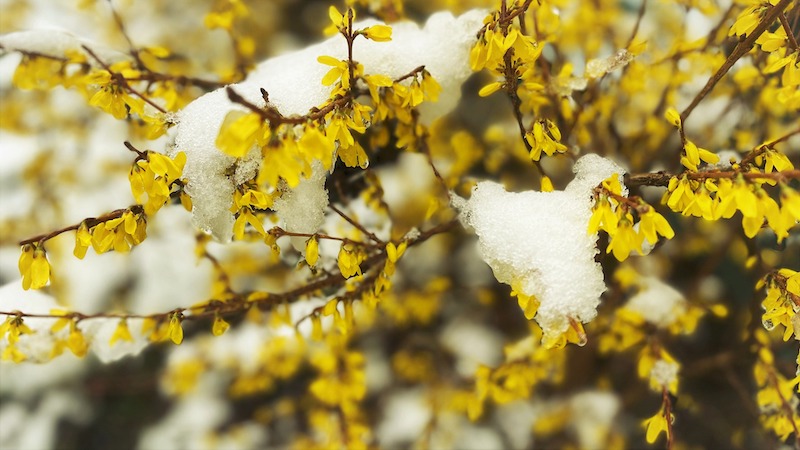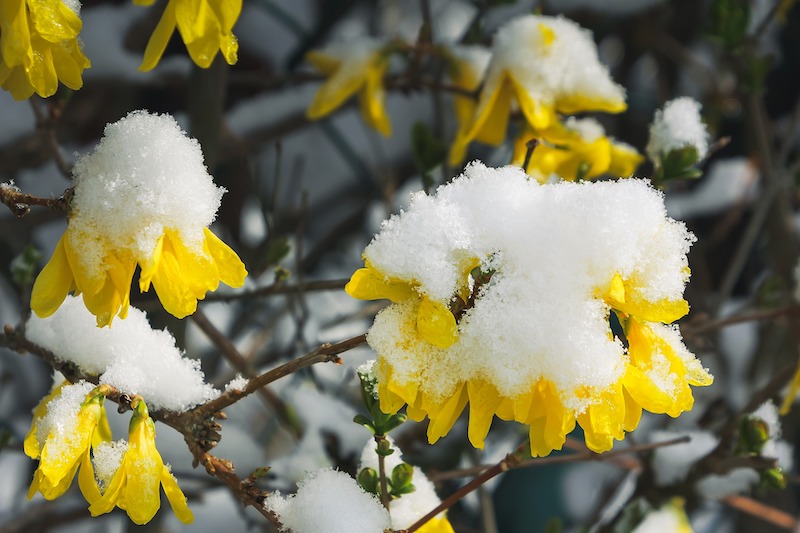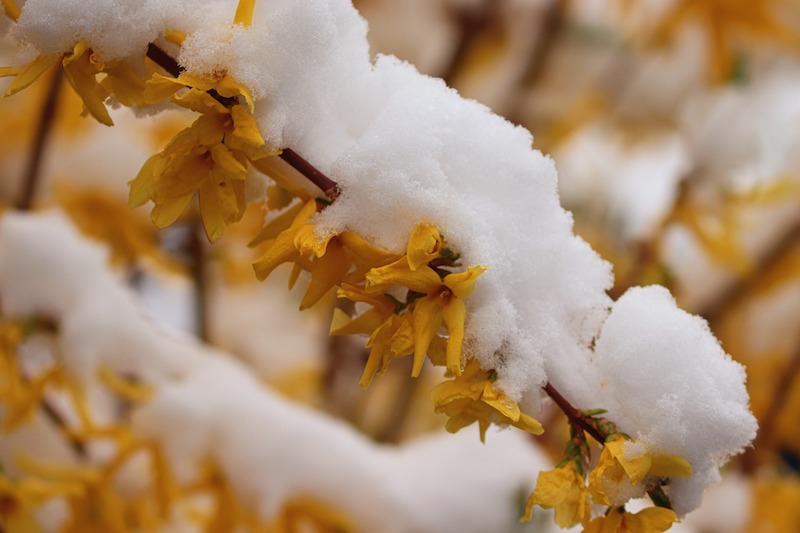Winter care for Forsythia is rather simple since this is a deciduous woody perennial. Forsythia grows as a perennial in zones 5 through 8, while some varieties can handle more northern zones. This hardy bush can resist the elements, although potted Forsythia may need extra care to get through the cold season. Taking good care of your Forsythia during the growing season will help the plant to get through the winter, ensuring this shrub will be covered in yellow blooms during the spring.

Protecting Forsythia in Winter
It is generally unnecessary to protect Forsythia during winter. This is a hardy bush that can handle cold and snow. While Forsythia drops its foliage in the fall, the strong woody stems can take on winter weather. You may want to cover plants grown near a building where snow can slide off the roof or young plants in areas prone to heavy snowfall during the winter; however, generally, this hardy shrub does not need the extra protection.

Cutting Back Forsythia For Winter
Remove dead or damaged branches from your Forsythia at any time. Wait until late spring or early summer to prune your Forsythia. Cutting this bush back in the fall will reduce springtime flowers. Forsythia blooms on old wood, so do not trim in the fall.

Forsythia Winter Care in Pots
Forsythia in pots requires slightly more winter care than plants in the ground, but the level of care is still pretty minimal. Container-grown plants may need protection from the elements in cold climates. The roots of potted plants are more exposed to cold temperatures than those in the ground. The ground offers more insulation and protects against the winter chill. Move potted Forsythia plants to a garage shed or basement to get them out of winter weather in areas that routinely experience below-freezing weather.
Watering Forsythia in Winter
Do not water Forsythia during the winter. Forsythia plants are dormant during winter and do not need water. Forsythias only need water when actively growing, unless your region has experienced a severe winter drought.
Growing Forsythia Indoors
Due to its dormancy period, Forsythia does not make a good houseplant. This plant needs a rest period to recover from the previous growing season and prepare for the next spring. Forsythia drops its leaves in the fall, and flowers will not appear until the spring. During the winter, Forsythia does not grow; the plant is a collection of bare branches, so it does not make for an appealing indoor plant.
Steps To Care For Forsythia in Winter
As a deciduous perennial, Forsythia bushes do not need a great deal of winter care. Plants in containers or extreme winter conditions may need protection, but generally, Forsythia shrubs can easily spend the winter outdoors.
Step 1 - Remove damaged or dead branches, but leave the serious pruning for early summer
Step 2 - Plants in areas with heavy snowfall, especially young plants, may need to be covered during the winter
Step 3 - Potted Forsythia bushes should be moved to a protected space when grown in frigid regions
 |
Author Alison Cotsonas - Published 09-01-2022 |
